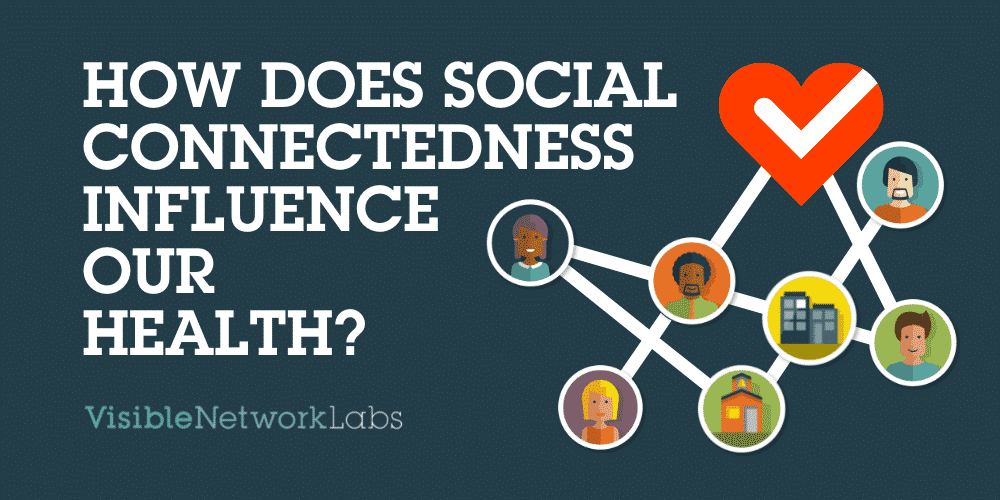Infographics
Try searching for a topic related to network science, building, and managing network, ecosystem tracking, community partnerships, social care, or the social determinants of health.
We create these network infographics to help our users understand network concepts, metrics, and ideas. Some examples include social isolation and loneliness, network science and leadership, social network analysis, strategic planning, communication, facilitation, trust, and power. We’re always adding new infographics; check back regularly.
Have a specific topic you want us to cover? Send us a message at hello@visiblenetworklabs.com, and we’ll see what we can do!

Ecosystem Mapping 101 Infographic: System Change for Social Impact
Ecosystem mapping involves mapping the relationships and interactions between the networks, stakeholders, policies, and environment on a specific issue or context. For example, the public health ecosystem consists of all the organizations in the public, non-profit, and private health sector, along with social service providers,

Public Health Collaboration: A Journey from Partnerships to Networked Ecosystems
Public health has long acknowledged the importance of partnership-building in achieving better health outcomes. As professionals in the field continually adapt their strategies to maximize the benefits of collaboration, various approaches have emerged. In our latest infographic, we present a comprehensive overview of these approaches

Layering Network Data to Create Actionable Insights
Social network analysis is a powerful way to visualize collaboration between partners, demonstrate your collective impact, and create actionable insights to improve the way you work together in the future. While a good deal of attention goes into designing and sharing your survey, the real

How do Young People Think About and Leverage Social Connectedness?
In our Social Support Research Fellowship – a partnership with the Annie E. Casey Foundation – we worked with four youth fellows to help us understand how young people think about and leverage social connectedness in their lives. Social support is a critically important determinant

Social Isolation vs Loneliness: An Infographic Explainer
Social isolation and loneliness appear a lot in the news these days. Following the past two years of quarantines and social distancing, these twin concerns are now a major priority for governments, mental health providers, and others in a number of sectors. However, there are

Indicators of Social Isolation Among Older Adults
Many studies suggest that older adults face a higher risk of social isolation and loneliness than the average American. This is due to several reasons, including a greater likelihood of losing a spouse or significant other, physical isolation in a care home, and a reduction

How to Analyze a Network Map: An Infographic
If you’ve ever looked at a map of a social network, it probably looked like a jumble of interconnected lines and nodes. Without the right skill and training, analyzing such a network map is an incredibly difficult task. You need to have an understanding of

How Does Social Connectedness Influence Health?
Over the past four decades, a significant body of literature has demonstrated that there is a significant link between social connectedness – our relationships with others – and our health and well-being. While this feels and sounds intuitive, you may have wondered specifically how our

5 Critical Tasks for Effective Network Management
Managing a network of community partners is no easy task. Unlike typical hierarchical organizations, a network is horizontal with few formal mechanisms for accountability through control. Network leaders have to rely on more abstract ideas like trust and mission alignment to keep their partners accountable,

Network Centrality: Understanding Degree, Closeness & Betweenness Centrality
Network centrality is among the most well-known social network analysis metrics, measuring the degree to which a person or organization is central to a network. There are three different ways to measure network centrality, and some are easier to understand than others. Centrality is a

Organizational Network Structures: 6 Common Examples
There are many different ways to structure a network… for example, in a decentralized structure, everyone in a network can be connected to everyone else, while in a centralized structure, everyone connects to a single, central entity. Each of these organizational network structures has its

Network Purpose: What Can You Accomplish Collectively?
People build networks for a reason, what we call their “network purpose.” Some networks or alliances are extremely focused in what they address, while others take a more fluid approach and change their purpose over time. However, it’s important to pick a purpose with intent
Connect with our Team!
Contact the VNL team to demo PARTNER™ or discuss a research or evaluation project. We can help you learn more about our services, help brainstorm project designs, and provide a custom scope based on your budget and needs. We look forward to connecting!
Email our team: hello@visiblenetworklabs.com
Send a message: Contact Us Here





